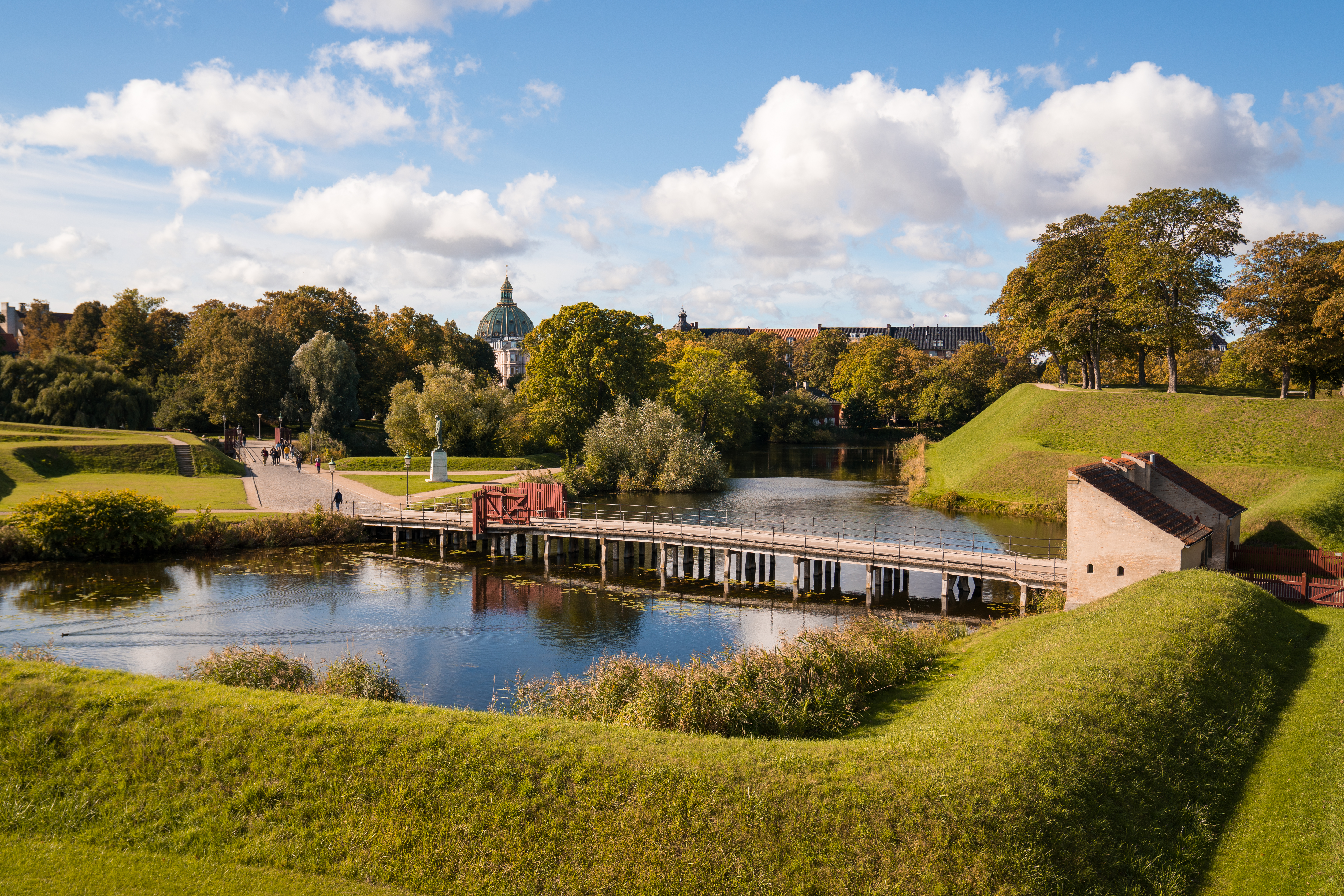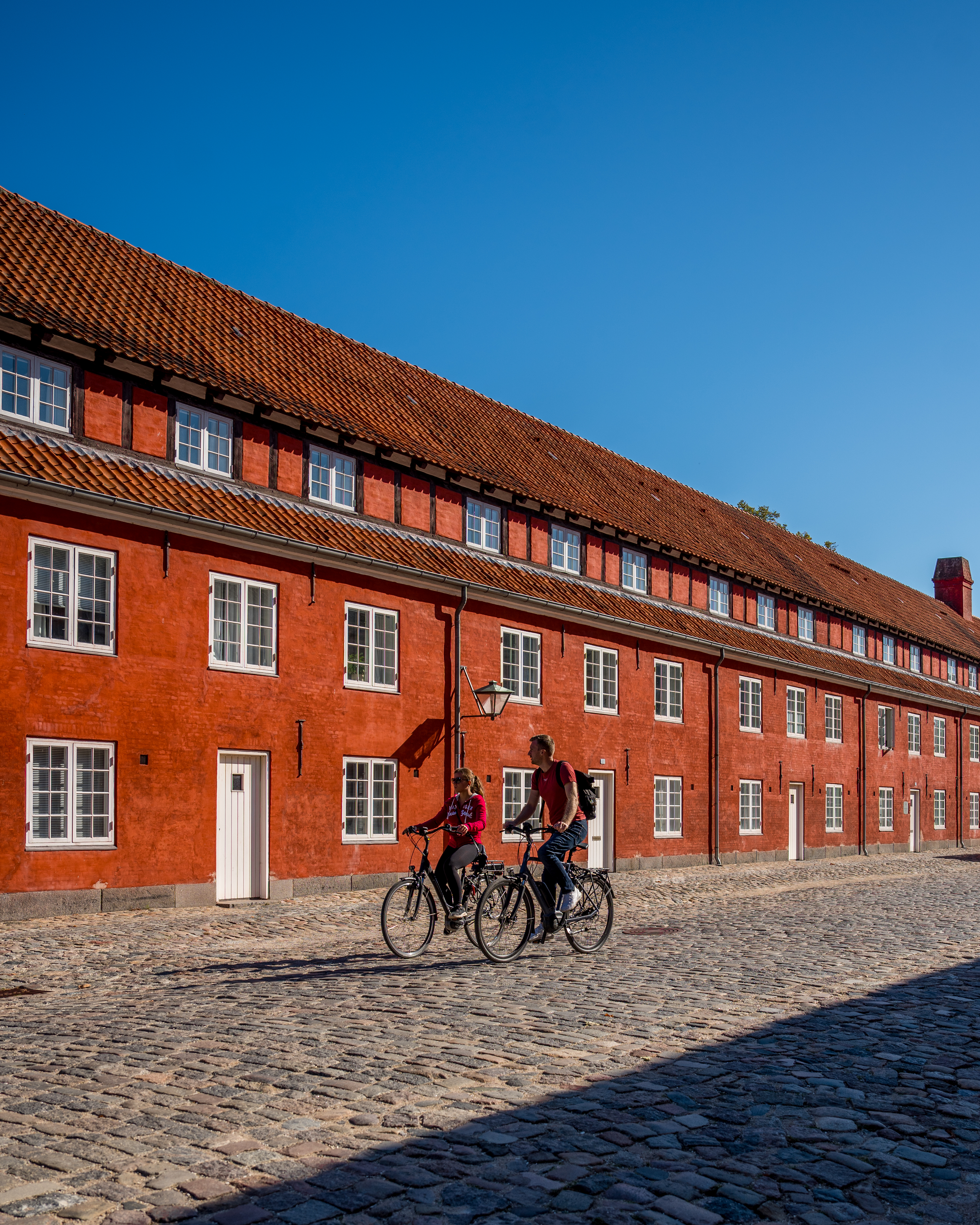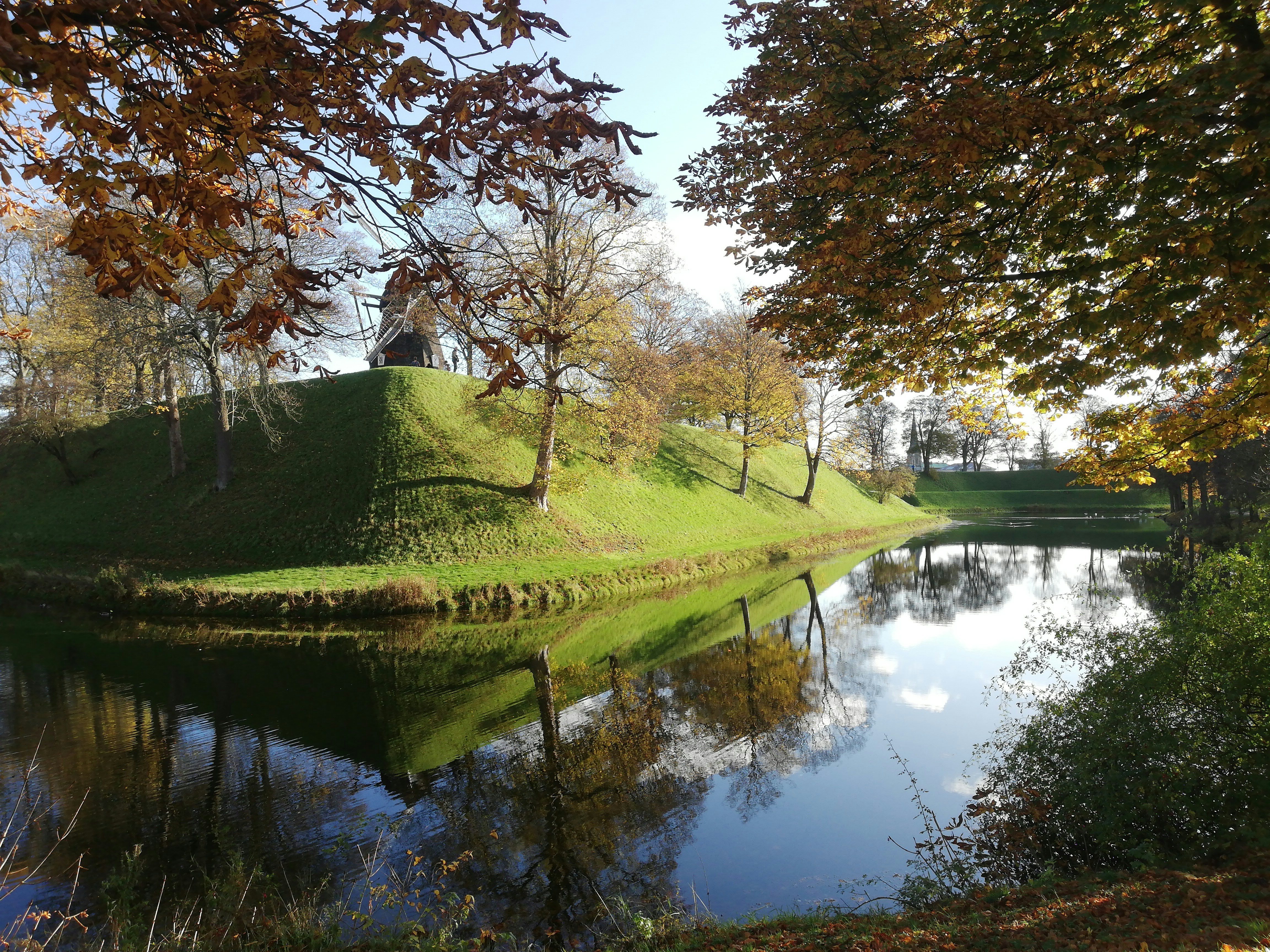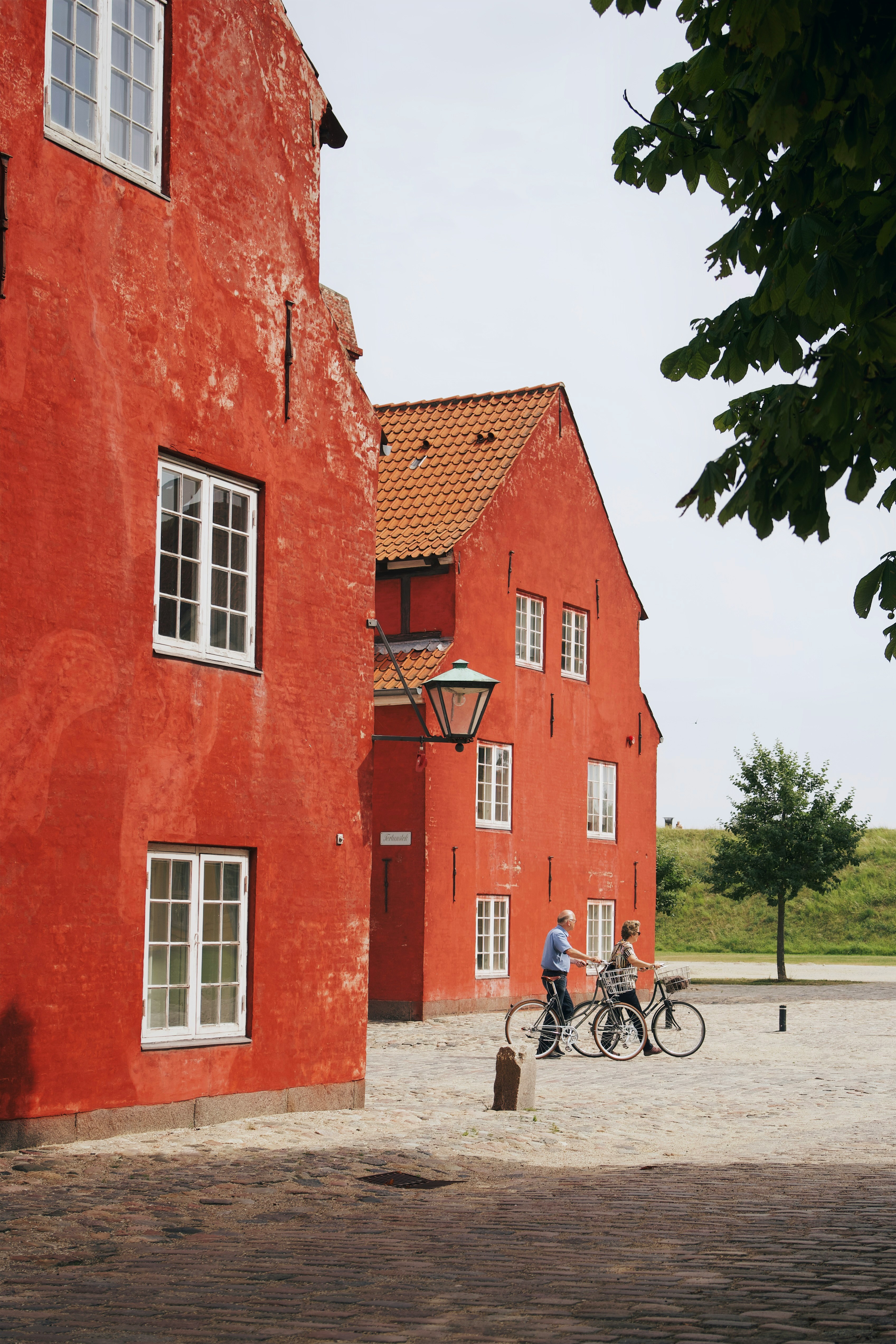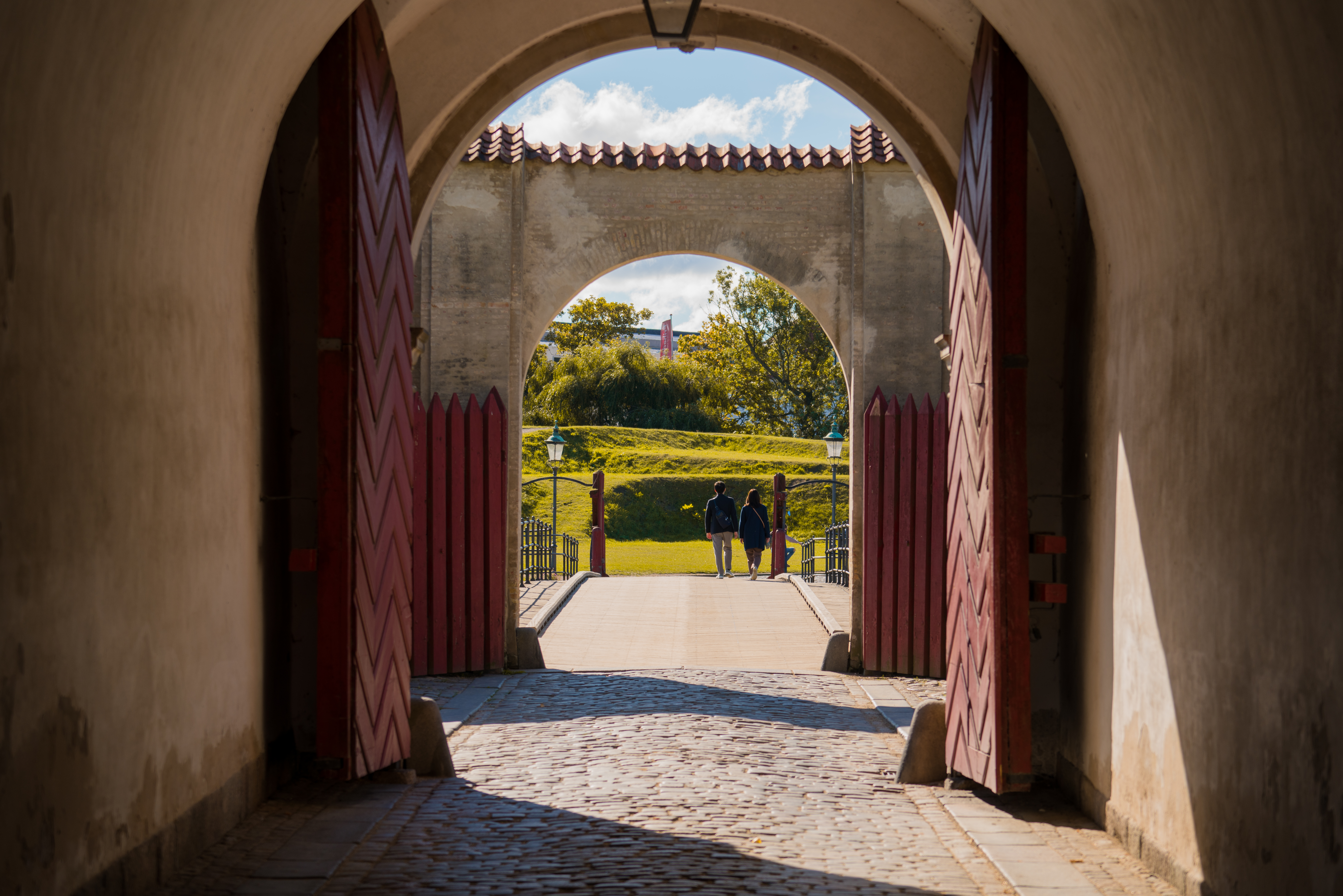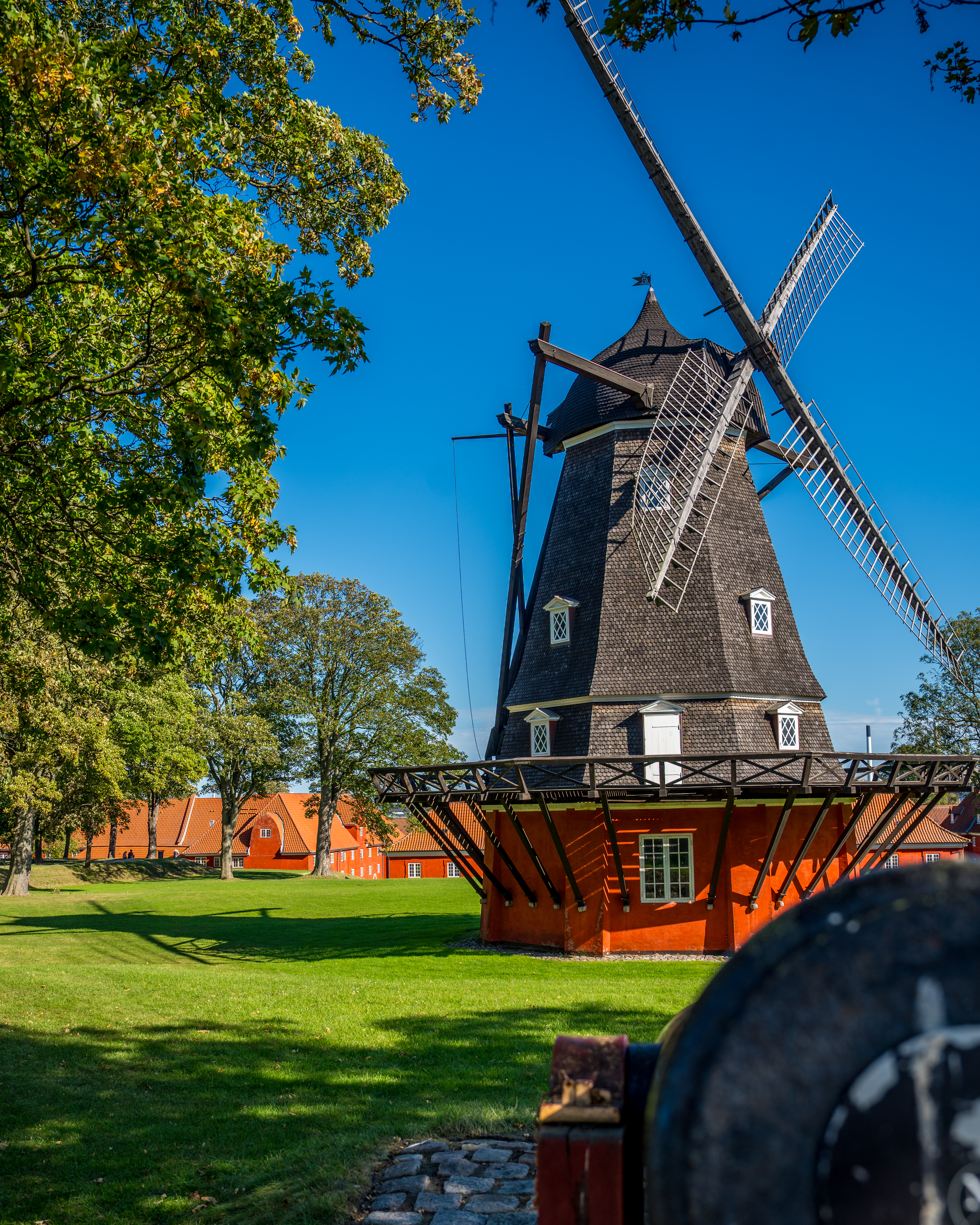Kastellet is a historical gem in the heart of Copenhagen and is one of the best-preserved fortresses in Europe. Behind the gates, you are greeted by long, red barracks buildings. In the past, officers, soldiers, and their families lived here, but today the buildings are used as offices for staff of the Danish Defence.
From above, you can see Kastellet’s distinct star shape, with five bastions and an impressive moat system. Walking along the ramparts, you follow the designated path, as sitting on the lush grass is not allowed.
However, you are still welcome, with benches placed around for resting. The site is more suited for walking or jogging than for picnicking.
Sense of Past and Present
Kastellet, located on the edge of Østerbro, has a strong historical atmosphere. An old windmill still stands, along with cannons, and next to the Citadel Church lies a former prison where, among others, Struensee – who had been convicted for treason – was held before his execution.
Across from the Citadel Church is the Commander’s House, with its yellow facade, white details, red tile roof, and triangular pediment featuring Christian IV’s monogram. Built in 1725 as a residence for Kastellet’s commander and later for the Chief of the Danish Defense, it now houses the Naval Officers’ Association.
In the northeast corner of Kastellet stands the Monument for Denmark’s International Efforts after 1948. Created by artist Finn Reinbothe, the monument honors Danes who have been deployed, are currently deployed, or will be deployed, and remembers those who did not return. It consists of granite walls with light features, the first of which bears the words "A Time – A Place – A Human."
War and Peace
The grounds are beautifully landscaped with old trees and various plant species, meticulously maintained. As you enjoy the peaceful surroundings, it’s worth reflecting that it was King Christian IV who initiated the construction of Kastellet. Driven by ambitions of great power, he strengthened Copenhagen’s defenses in 1626 with St. Anne's Redoubt, the forerunner of Kastellet. After Christian IV’s death, his son, Frederik III, continued the work and brought the plans to life.
Kastellet was built by Dutch fortress builder Henrik Rüse between 1662 and 1665 and was originally called Citadel Frederikshavn, named after the king. The first soldiers marched into Kastellet on October 28, 1664, a date now celebrated annually as the Kastellet’s birthday.
Near Kastellet
Kastellet is surrounded by history, with easy access to other interesting sites. Right next door is the Museum of Danish Resistance, which reopened in 2019 with a highly praised exhibition after a devastating fire.
From Kastellet, you can also take a stroll through the Churchill Park and see Saint Alban’s Church and the Gefion Fountain. You can continue along the harbor past the Maersk headquarters to Amaliehaven, Amalienborg, and the rest of Frederiksstaden, with the Marble Church as a prominent landmark.
